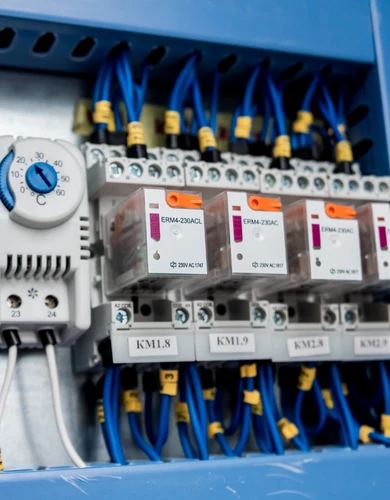An overview of the Green Gas Certification Scheme (GGSC)
The Green Gas Certification Scheme (GGCS) is the gold standard for certifying green gas supplies. It proves that gas delivered through the British gas grid has been produced from a renewable source, rather than by using fossil fuels.
This guide explains the Green Gas Certification Scheme and how businesses can benefit from it. Here are the key parts of our guide:
- What is the Green Gas Certification Scheme (GGCS)?
- Why the GGCS exists
- How the GGCS works
- How businesses use GGCS for energy procurement
- How businesses use GGCS for carbon reporting
What is the Green Gas Certification Scheme (GGCS)?
The Green Gas Certification Scheme (GGCS) is an independent certification that tracks green gas from the point it is injected into the gas grid to the point it is delivered in a green gas tariff by an energy supplier.
We begin our guide to the Green Gas Certification Scheme with a brief overview of green gas and green gas certificates.
What is Green Gas?
The formal chemical name for green gas is biomethane. It is a renewable form of methane that can be produced from organic materials such as food waste, sewage, or crops.
Biomethane is chemically identical to natural gas, making it fully compatible with the British gas grid. The main advantage of biomethane is that it has a significantly lower carbon footprint compared to natural gas, a fossil fuel.
Biomethane is produced through a process called anaerobic digestion, in which microorganisms break down organic material in the absence of oxygen.
There are over 100 anaerobic digestion facilities across Britain currently injecting biomethane into the gas grid.
Renewable Gas Guarantees of Origin (RGGOs)
A Renewable Gas Guarantee of Origin (RGGO) is a certificate issued by the Green Gas Certification Scheme. Each certificate represents 1 kWh of biomethane injected into the gas distribution grid and includes the following information:
RGGO minimum information:
- Injection date: The date on which the green gas was injected into the gas grid.
- Gas production facility: The type of facility used to produce the gas, along with its address and ownership details.
- Biomass information: Information about the feedstock used to produce the gas.
Additional information that may be provided:
- Sustainability criteria: An additional label if the gas meets sustainability standards set by other schemes such as the Green Gas Support Scheme or the Renewable Transport Fuel Obligation.
- Greenhouse gas threshold: The greenhouse gas emissions associated with the production of this kWh of biomethane.
- Proof of sustainability: Used if the producer also adheres to a voluntary green gas certification body.
- Carbon capture credits: A label applied if the anaerobic digestion site captures and transports carbon dioxide generated during biomethane production.
💡Renewable Energy Guarantees of Origin (REGOs) are the electricity equivalent of RGGOs.
Why the GGCS exists
The Green Gas Certification Scheme is designed to solve the problem of proving that gas has been sustainably sourced.
When biomethane enters the grid, it mixes with regular natural gas, which makes up the vast majority of gas in the system.
Because of this mixing, it is impossible to determine exactly where the green gas ends up, so it cannot be directly tracked to a specific home or business gas connection.
The Green Gas Certification Scheme was created to provide a trusted and transparent system to:
- Track how much green gas is injected into the grid.
- Ensure that only one supplier claims to deliver this green gas.
- Provide auditable proof of origin to support green gas tariffs.
How the GGCS works
The Green Gas Certification Scheme tracks the production, injection, and consumption of biomethane through the gas grid using RGGO certificates, which are held on a shared registry.
The registry is a digital platform and database that tracks the ownership and status of each RGGO. To explain how this works, we’ve summarised the different lifecycle stages of an individual certificate.
1. Biomethane production
A participating anaerobic digestion facility generates biomethane by converting a biomass energy source into green gas.
The green gas is processed to ensure it meets the quality requirements of the gas distribution grid.
See more below about green gas producers.
2. Grid injection
Biomethane is injected into the natural gas pipeline that forms part of the national gas grid. At the point of injection, a gas meter measures the volume of gas injected into the grid.
3. Renewable Gas Guarantee of Origin issuance
For every kilowatt-hour (kWh) of biomethane injected, the GGCS issues a Renewable Gas Guarantee of Origin (RGGO) certificate to the producer.
The certificate is issued via the GGCS online registry in the name of the owner of the anaerobic digestion plant.
4. Certificate sale
The producer sells RGGO certificates to energy suppliers, who use them to certify green gas tariffs, or to businesses, who use them to report lower carbon emissions.
5. Certificate redemption
The purchaser of an RGGO then redeems the certificate to support a green gas claim:
- An energy supplier will redeem certificates to match the volume of gas that its customers consume.
- A business will redeem certificates to match its gas consumption.
💡RGGOs automatically expire if not redeemed within three years of their issuance.
Participants and their roles in GGCS
In this section, we’ll outline the key registered participants in the Green Gas Certification Scheme.
Each participant is granted access to the online registry to receive, trade, and redeem RGGO certificates.
Green gas producers
Green gas producers are facilities that generate green gas and receive Renewable Gas Guarantees of Origin from the GGCS.
There are currently approximately 120 producers registered with the GGCS. The GreenGas website has a list of registered producers.
The majority of producers on the list use anaerobic digestion technology to generate green gas from one of the following biomass energy sources:
- Sewage – Local water companies use sewage extracted from wastewater at their sewage treatment works.
- Energy crops – Facilities that use maize specifically grown on farms to produce green gas.
- Agricultural waste – Farm-based anaerobic digesters that use animal manure or crop residues to produce biomethane.
- Food waste – Facilities that process waste from local food waste collections or commercial food waste collection services.
- Food manufacturing – Bespoke systems built to process the waste from industrial food processing or brewery operations.
Traders of RGGOs
The Green Gas Certification Scheme encourages the involvement of intermediaries that actively trade RGGOs on the GGCS registry.
Traders do not produce or consume biomethane themselves but instead act as brokers to facilitate the purchasing of RGGOs by non-registered businesses.
Gas suppliers
Ofgem licensed gas suppliers are typically registered participants in the Green Gas Certification Scheme.
Gas suppliers use the scheme to purchase RGGOs from the registry and then redeem them to match the gas their customers consume.
See more below on finding a registered GGCS business gas supplier.
GGCS rules and governance
The Green Gas Certification Scheme is operated by the non-profit Renewable Energy Assurance Ltd.
Trust and credibility in the GGCS are absolutely vital, as the scheme provides independent proof of the sustainable sourcing of gas supplies.
Here are the key governance rules that maintain trust in the Green Gas Certification Scheme:
- Scheme rules – There are formal rules and procedures that all participants in the GGCS must follow. These are designed to provide confidence in the origin of RGGOs, specifying how they are issued, what they represent, and under what conditions.
- Audit framework – The GGCS requires producers to undergo annual third-party audits. Third-party auditing ensures that RGGOs are issued accurately and fairly, and that feedstock claims are verifiable.
- Independent operation – The GGCS is not controlled by the government, regulators, or energy companies, which helps ensure its independence and credibility.
How businesses use GGCS for energy procurement
In this section, we’ll explain how businesses can choose a gas supply that is backed by the Green Gas Certification Scheme.
Finding a GGCS-participating supplier
The GreenGas website provides a list of GGCS registered traders. This includes licensed business gas suppliers who purchase RGGOs to certify their green business energy tariffs.
GGCS-participating suppliers include the following notable energy companies:
- British Gas business energy
- E.ON business energy
- Ecotricity business energy
- Engie business energy
- Good Energy for business
- Scottish Power business energy
- SSE business energy
- TotalEnergies for business
Understand green gas offerings
All of the best business energy suppliers offer green gas tariffs, but the way these are delivered varies from supplier to supplier.
Green gas tariffs are typically delivered through one of the following methods:
- Green gas certification – All gas delivered is directly backed by biomethane injected into the grid and certified by the GGCS.
- Carbon offset – The supplier delivers conventional natural gas but offsets the emissions by investing in carbon-negative projects, such as planting forests.
Comparing tariff rates
Green gas tariffs for businesses are offered as fixed-rate contracts lasting one to three years, with a defined:
Visit our business energy comparison page to request green gas quotes from our energy experts.
Switch to a green gas tariff
Once you’ve identified your chosen GGCS-backed green gas tariff, you’ll need to switch suppliers to start receiving gas backed by RGGOs.
This process is simpler than you might think and only requires signing a new business energy contract and letting your new supplier handle the rest.
Visit our switch business energy suppliers page to learn more.
How businesses use GGCS for carbon reporting
Under streamlined energy carbon reporting regulations, large businesses in the UK must publicly disclose the greenhouse gas emissions associated with their gas usage.
The Green Gas Certification Scheme can be used by these businesses to report lower emissions associated with their gas use. Here are the individual steps:
- Use business gas meter measurements or business gas bills to calculate annual gas consumption for your business.
- Purchase sufficient RGGOs directly on the open market to match the amount of gas your business consumes.
- Redeem these certificates within the same reporting period as the consumption.
- Calculate your green gas-supported carbon intensity based on the RGGO carbon intensity.
- Retain proof of the redeemed RGGOs for sustainability audits.

